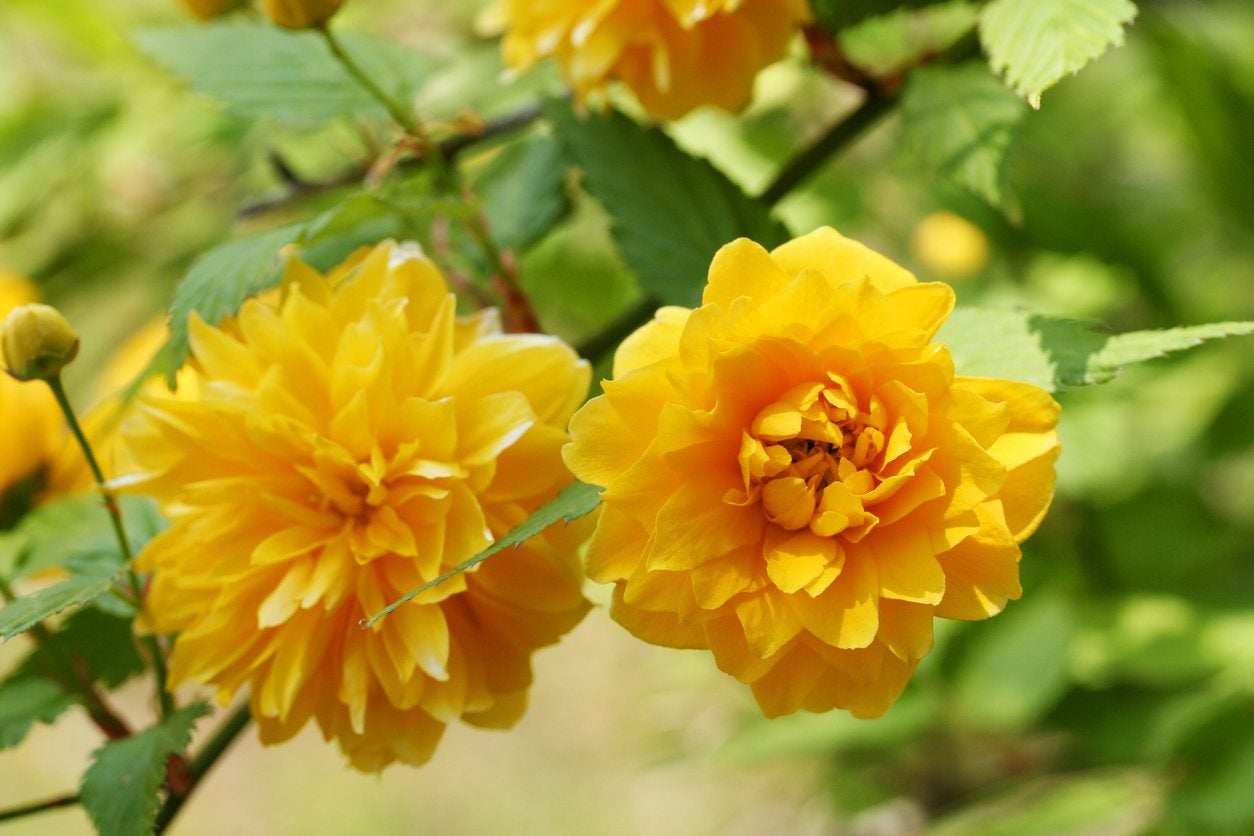Kerria Japanese Rose: Tips On Growing A Japanese Kerria


In spite of its graceful appearance, Kerria Japanese rose, also known as Japanese rose plant, is as tough as nails, growing in USDA plant hardiness zones 4 through 9. Kerria Japanese rose is rarely bothered by pests and tends to be deer resistant. Read on for tips on growing a Japanese Kerria in your own garden.
Growing a Japanese Kerria
Kerria Japanese rose (Kerria japonica) is a versatile shrub with arching, greenish yellow stems and masses of golden yellow, chrysanthemum-like flowers that put on a show in spring. The bright green leaves turn yellow in fall, and the stems provide color in the depths of winter, after the deciduous foliage is long gone. Japanese rose plants grow in moderately fertile, well-drained soil, and don’t perform well in heavy clay. Although Kerria Japanese rose tolerates full sunlight in cool climates, it generally prefers a site in afternoon shade. Too much sunlight causes the shrub to take on a bleached appearance and the flowers tend to fade quickly.
Japanese Kerria Care
Japanese Kerria care is not complicated. Basically, just water Japanese Kerria regularly, but avoid overwatering. The plant is fairly drought-tolerant and doesn’t do well in soggy soil. Prune Kerria Japanese rose after blooming to maintain a tidy appearance and promote blooms the following season. Seriously overgrown shrubs can be rejuvenated by cutting the plant to the ground, which improves blooming and creates a fuller, healthier plant. Removing suckers regularly can keep the plant in check and prevent unwanted growth. However, its spreading nature makes Kerria Japanese rose useful for erosion control, naturalized areas, and mass plantings, as their mounding growth habit is spectacular when the shrub is grown in drifts.
Is Kerria Japanese Rose Invasive?
Although Japanese rose plant is relatively well-behaved in most climates, it can become invasive in certain areas, particularly in the eastern and southeastern United States. If this is a concern, it’s always a good idea to check with your local Cooperative Extension office before planting.
Gardening tips, videos, info and more delivered right to your inbox!
Sign up for the Gardening Know How newsletter today and receive a free copy of our e-book "How to Grow Delicious Tomatoes".

A Credentialed Garden Writer, Mary H. Dyer was with Gardening Know How in the very beginning, publishing articles as early as 2007.
-
 Looking For Plants To Give You The Soft And Fuzzies? Try These 5 Fuzzy Leaf Plant Options
Looking For Plants To Give You The Soft And Fuzzies? Try These 5 Fuzzy Leaf Plant OptionsLovers of texture, drama, silver foliage and tactile plants will adore these special sensory garden additions. These fuzzy leaf plant options will leave you all aglow
By Susan Albert
-
 Get Ready For A Summer Of Hummers! Grow These Full Sun Hummingbird Plants and Flowers
Get Ready For A Summer Of Hummers! Grow These Full Sun Hummingbird Plants and FlowersIf you’re lucky enough to enjoy a sunny backyard, make sure you are maxing out on your pollinator opportunities and grow these full sun hummingbird plants and flowers
By Tonya Barnett